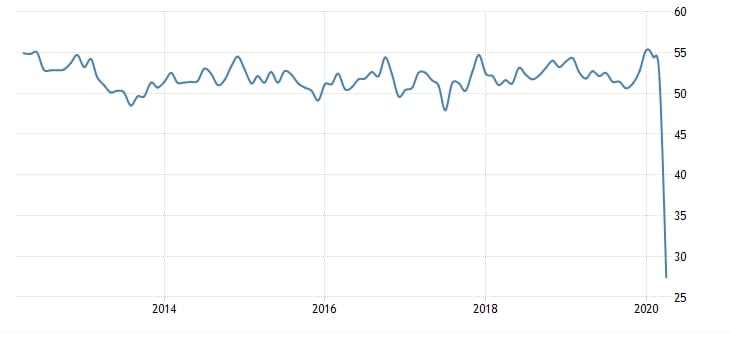


April data pointed to an unprecedented contraction in Indian manufacturing Purchasing Managers' Index (PMI) to 27.4, as the national lockdown to stem the spread coronavirus disease hit businesses hard.
The latest reading is the lowest that the index has ever touched. It points to the sharpest deterioration in business conditions across the sector since data collection for the series began over 15 years ago.

In an environment of severely reduced demand, new business collapsed at a record pace and firms sharply reduced their staff numbers. Meanwhile, both input costs and output prices were lowered markedly as suppliers and manufacturers themselves offered discounts in an attempt to secure orders.
At 27.4 in April, the seasonally-adjusted IHS Markit India Manufacturing PMI:registered: fell from 51.8 in March. The latest reading pointed to the sharpest deterioration in business conditions across the sector since data collection began over 15 years ago.
The decline in operating conditions was partially driven by an unprecedented contraction in output. Panellists often attributed lower production to temporary factory closures that were triggered by restrictive measures to limit the spread of COVID-19.
Discover the latest Business News, Sensex, and Nifty updates. Obtain Personal Finance insights, tax queries, and expert opinions on Moneycontrol or download the Moneycontrol App to stay updated!